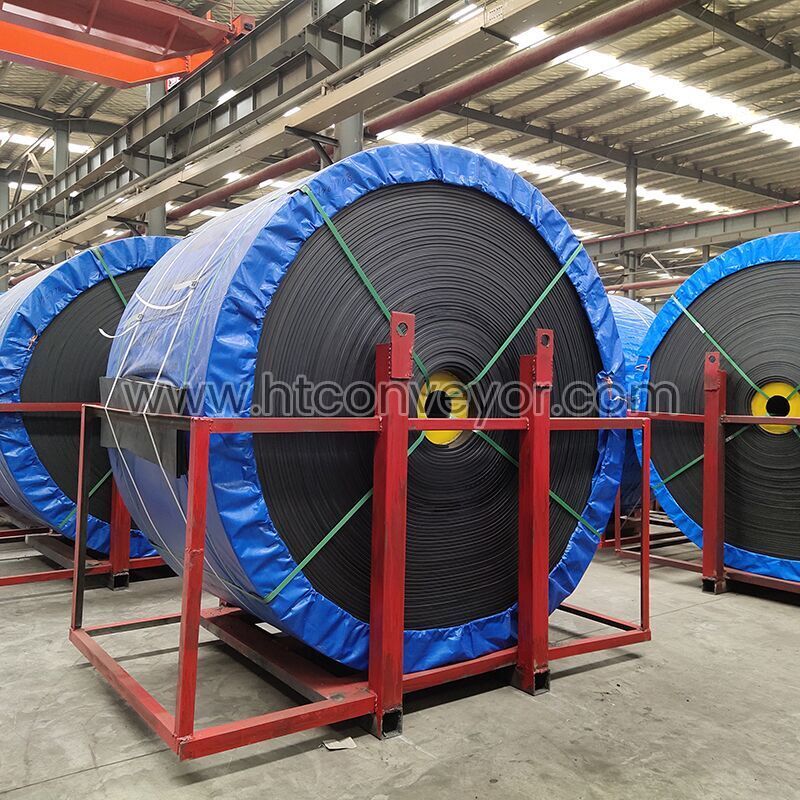Introduction:
In the vast landscape of industrial processes, the seamless movement of materials is crucial for optimizing productivity and ensuring operational efficiency. Among the array of tools used for material handling, rubber conveyor belts stand out as an indispensable solution. These belts, constructed with layers of rubber and fabric, have become the backbone of various industries, revolutionizing the way materials are transported. This article explores the significance, construction, benefits, and diverse applications of rubber conveyor belts.
Significance of Rubber Conveyor Belts:
Rubber conveyor belts play a pivotal role in streamlining material handling operations across industries. They offer a reliable and efficient means of transporting various types of goods, ensuring smooth production processes and reducing manual labor. These belts are designed to withstand heavy loads, resist abrasion, and endure challenging environments, making them a trusted choice for industries worldwide.
Construction and Components:
Rubber conveyor belts are constructed using a combination of rubber and fabric layers, engineered to meet specific application requirements. The core of the belt comprises multiple fabric layers, such as polyester, nylon, or cotton, which provide strength and stability. The rubber layers surround the fabric, safeguarding it from wear and tear, and offering a smooth surface for the movement of materials. Additional components, including cover compounds, edge reinforcements, and impact-absorbing layers, can be incorporated to enhance the belt's performance and longevity.

Benefits of Rubber Conveyor Belts:
Durability: Rubber conveyor belts are built to withstand heavy-duty applications, ensuring longevity and minimizing downtime. Their robust construction and resistance to abrasion, impact, and moisture make them ideal for demanding environments, such as mines, quarries, and construction sites.
Flexibility: These belts are highly versatile and can be customized to meet specific operational needs. They are available in various widths, lengths, and thicknesses, allowing seamless integration into existing conveyor systems. Rubber belts can navigate curves, inclines, and declines, adapting to the layout of the facility and optimizing material flow.
Efficient Material Transport: Rubber conveyor belts offer excellent traction, minimizing slippage and ensuring precise control over material movement. This characteristic is particularly important in industries that require accurate positioning and consistent speed, such as manufacturing and logistics.
Cost-Effective: Investing in rubber conveyor belts proves to be cost-effective in the long run. Their durability reduces maintenance and replacement costs, while their ability to handle large volumes of materials enhances productivity. Moreover, these belts are energy-efficient, contributing to overall operational savings.
Applications of Rubber Conveyor Belts:
Mining and Quarrying: Rubber conveyor belts are extensively used in mining and quarrying operations for the transportation of coal, minerals, aggregates, and other raw materials. They can withstand harsh conditions, including extreme temperatures and the presence of chemicals, oils, and abrasive materials.
Manufacturing and Packaging: Rubber belts are crucial in manufacturing industries for the movement of raw materials, components, and finished products along production lines. They facilitate automated processes and enable efficient packaging and dispatching.
Food Processing: Conveyor belts with food-grade rubber are utilized in the food processing industry. These belts meet strict hygiene and safety standards, ensuring the smooth and sanitary movement of food products during various stages of processing and packaging.
Warehousing and Logistics: Rubber conveyor belts are integral to warehouse and distribution center operations. They facilitate the efficient movement of goods, reducing manual labor and expediting order fulfillment. These belts are also used in airports for baggage handling.
Agriculture: In agricultural settings, rubber conveyor belts aid in the handling of crops, grains, and seeds. They assist in tasks such as harvesting, sorting, cleaning, and packaging, enhancing overall efficiency and productivity.
Conclusion:
Rubber conveyor belts have revolutionized material handling processes across numerous industries, offering durability,flexibility, and efficiency. As a backbone of industrial efficiency, these belts have proven to be indispensable in ensuring seamless material transport. From mining and manufacturing to food processing and logistics, rubber conveyor belts have found their place in diverse applications.
The continuous advancements in conveyor belt technology have led to the development of specialized belts for specific industries. For example, heat-resistant belts are used in high-temperature environments, while oil-resistant belts are designed to withstand exposure to oils and greases. Fire-resistant belts provide an added layer of safety in industries where fire hazards are a concern.
The maintenance of rubber conveyor belts is crucial for their optimal performance and longevity. Regular inspections, cleaning, and proper tensioning of the belt are essential to prevent slippage, tracking issues, and excessive wear. Additionally, timely repairs and replacements of damaged components ensure uninterrupted material flow and minimize downtime.
The future of rubber conveyor belts is poised to witness further advancements driven by emerging technologies. The integration of sensors and automation can enable real-time monitoring of belt performance, detecting potential issues before they escalate. This proactive approach to maintenance can further enhance operational efficiency and reduce unplanned downtime.
Furthermore, the development of eco-friendly and sustainable materials for conveyor belts is gaining momentum. Manufacturers are exploring options such as recycled rubber and bio-based polymers to reduce the environmental impact of belt production and disposal.
In conclusion, rubber conveyor belts have revolutionized material handling operations across a wide range of industries. Their durability, flexibility, and efficiency make them an essential tool for optimizing productivity and streamlining processes. From mining and manufacturing to food processing and logistics, these belts provide a reliable and cost-effective solution for material transport. As technology continues to evolve, we can expect to see further innovations in conveyor belt design, incorporating advanced features and sustainable materials. The rubber conveyor belt will continue to play a crucial role in driving industrial efficiency, facilitating the seamless movement of materials and powering the growth of various sectors.
591
0
0
All Comments (0)
Previous: How Does a Hydraulic Mill Roll Stand Work?
Next: The Versatility and Efficiency of Rubber Conveyor Belts
If you are interested in sending in a Guest Blogger Submission,welcome to write for us!
Comments